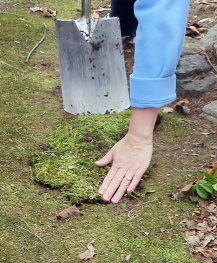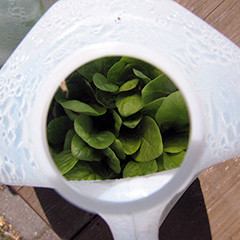
The mild winter gives way to a spring calendar--but, gardeners, not so fast! For some ideas on what to do--and not do--in the March landscape, please read on:
Don't do this in March:
- Don't spread fertilizers. If you live in zone 6, or colder, March is too early. Wait until soil temperatures are greater than 50 degrees for several days in a row. Use a soil thermometer. Also, the full burst of forsythia bloom is a pretty good indicator.
- Don't remove mulch from perennials. That's best done on April 15 or later. In our area, the frost-free date is about May 1 - May 10.
Do this in March:
- Get soil tests as soon as soil can be worked to a depth of about six inches. See below for some soil test ideas and resources.
- When soil is no longer frozen, it's safe to spread lime (if a soil test indicates the need). In our area, that's usually after March 15--sometimes as late as April 1. It is best to spread lime several weeks or even months ahead of fertilizer. I have become a fan of fast-acting lime, which does its' work in much less time than conventional lime and usually requires only one application.
- Plant some moss in areas where nothing else seems to grow. Pick up patches of moss and press them onto bare ground. Moss doesn't have roots like other plants, so it's okay to pick up thin slices from the soil surface. Moss thrives on consistent moisture, above all else, and spring is a good time to get it established. Once you've patched in the moss, walk on it! Yes, that's the advice from professional moss grower Annie Martin.
-
Use cold frames to get a two-week head start on the growing season and as much as four extra weeks at the end of the season. Milk jugs are a great source of free "cold frames."

- Turn compost piles. Warmer temperatures mean more microbial activity, which leads to finished compost faster.
- Finally, it is a good idea to keep the bare soil covered with mulch any time of year. It needn't be expensive material--baled straw is an excellent material, especially for vegetable gardens. Chopped straw or "cooked" chopped hay are also good. Keep in mind that "uncooked" hay contains weed seeds which will happily sprout in your gardens.
Soil tests:
When ordering soil tests, be sure to describe what you plan to grow--otherwise, you may get a "standard" recommendation, usually for lawn soil.
In addition to the basic test (N-P-K), always ask for percent organic matter--it should be between five to eight percent for optimal soil and plant health. If the landscape is close to a road or was heavily fertilized and manured in the past, consider asking for a soluble salts test. Finally, a soil textural analysis may help you match the best plants to the places you want to cultivate.
- UMass: http://soiltest.umass.edu/
- UConn: http://www.soiltest.uconn.edu/
- CT Agricultural Experiment Station: http://ct.gov/caes (enter "soil test" in the search bar) (free basic test)
- Logan Labs: http://www.loganlabs.com/
For even more ideas and details, see my recent article in The Day/Zip 06. Or download it below.
| Attachment | Size |
|---|---|
| 130.1 KB |
